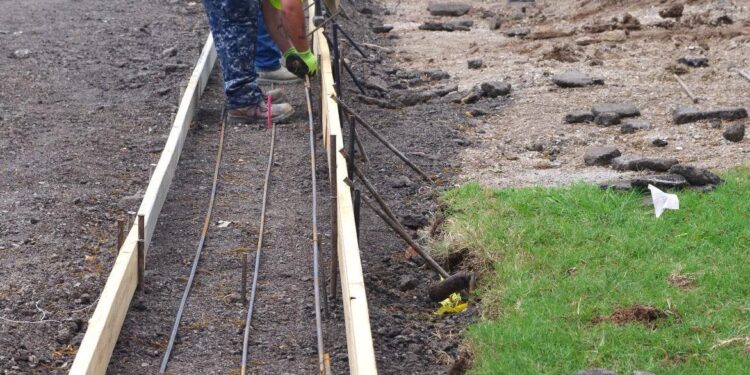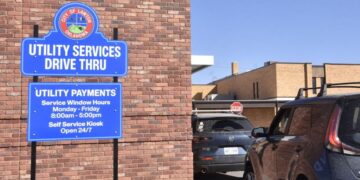Repairing or replacing all the identified problems with Lawton streets would cost $495 million.
That’s repairing today’s problems over a five-year period, said Kurt Keifer, president of Infrastructure Management Services (IMS), the firm the City Council hired more than a year ago to analyze Lawton streets. The firm’s task was two-fold: analyze the condition of arterials and residential streets, then make recommendations on how to address issues. IMS completed its analysis and report, which Keifer presented to the council Tuesday. Council members didn’t take any action — the item was set for presentation only — but they did ask questions about IMS’s process, its recommendations and the condition of city streets.
In a nutshell: The average PCI (pavement condition index) for Lawton streets is 57 (which falls into the Fair category), while the national average is 65 (Good category). IMS’ analysis shows 57 percent of Lawton streets fall into the Fair to Very Good categories, with another 6 percent in the Excellent category (the highest rating). But, 53 percent fall into the Fair, Marginal and Poor categories, with another 3 percent rated Very Poor (the worst rating).
Keifer said PCI (a rating index developed by the U.S. Corps of Engineers) typically indicates that a street with a rating of less than 40 (Poor is 25 to 40) should be rebuilt. That is what is considered a “backlog,” meaning the number of streets that need this remedy. Lawton’s backlog is 19 percent; the national average is 9 percent.
Streets with the Good designation only need preventive maintenance (20 percent of Lawton streets are within Good, another 18 percent are Very Good). Those in the Fair or lesser category are ready for thing such as mill and overlay, or compete rebuilds.
The analysis did show some good news for Lawton: streets crews are doing a good job of using preventive maintenance techniques such as crack sealing.
“It’s better to do preventive maintenance than fix a fail,” Keifer said, noting the cost to preserve a street with maintenance is $4.80 per square yard, while the cost to rebuild it is $225 per square yard.
That’s why regular analysis is a good idea, Keifer said, explaining the idea is to analyze roads on a five-year basis to chart changes. That helps determine which streets need maintenance to extend their lives, and which are ready for rebuild.
“You adjust your practices based on data,” he said.
Keifer said Lawton has been tackling the issue in recent years via a dedicated maintenance program (he specifically noted plans to seal cracks on portions of West Gore Boulevard this summer).
“The city is being proactive with crack sealing,” he said, explaining it is crucial to prevent water — which expands when it freezes — from seeping into roads and causing damage.
That’s why one of the recommendations made by IMS may seem contrary to conventional wisdom. Keifer said the recommendation is to focus first on preventive maintenance, then address the worst streets on a priority basis. The idea is to maintain what the city has, keeping conditions from worsening.
IMS also said while Lawton spends $17.4 million a year on roads through its budget and the Capital Improvement and Ad Valorem programs, it isn’t enough. Keifer said at that level, Lawton can expect to see its PCI rating drop while its backlog of roads needing replacement would increase to 31 percent.
Increasing the spending level to $36 million a year would keep the PCI at 57, while keeping the backlog to 24 percent in five years. To make a real impact, Lawton would have to spent $53 million a year to increase its PCI to 62, while holding its backlog at 19 percent, Keifer said.
But, Keifer told the council the firm’s analysis and recommendations are based on only one survey. And, the data is not written in stone.
“These forecasts will change over time,” he said, adding the city’s long-term goal should be to move toward the national average in terms of backlog, “but I know that requires a significant investment.”
So, the best thing Lawton can do — in addition to providing more funding for streets — is keep its pavement in good condition. He said Lawton is doing a good job, applying crack sealing to the roads that need it. That’s important because crack sealing can extend a road’s life by five to eight years, he said.
City officials did not say Tuesday what they would do with the IMS data. But, council members and city administrators said last year the goal of the analysis was to provide data that would help set road priorities.
Want to reach a local audience and grow your business?
Our website is the perfect platform to connect with engaged readers in your local area.
Whether you're looking for banner ads, sponsored content, or custom promotions, we can tailor a package to meet your needs.
Contact us today to learn more about advertising opportunities!
CONTACT US NOW





